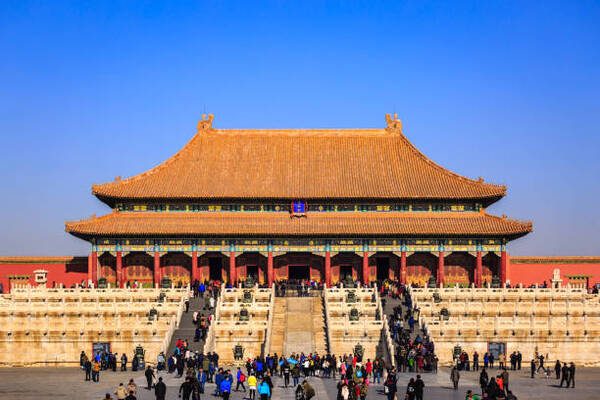China’s Tourism Surge Hits New Peaks With Game-Changing Visa Policies And Elevated Visitor Experience
4 min readThursday, May 22, 2025

China’s inbound tourism is booming, with a surge in international visitors and spending, fueled by streamlined visa policies and an enhanced travel experience
China’s inbound tourism sector has experienced a remarkable resurgence in recent years, reflecting a positive shift in both the number of international arrivals and the amount of visitor spending. This strong recovery is attributed to a combination of factors, including the country’s strategic visa reforms, improved travel policies, and a general enhancement of the overall travel experience for foreign visitors. Industry experts and government officials alike have pointed to these initiatives as the driving forces behind the boost in inbound tourism.
Advertisement
In 2024, China welcomed approximately 132 million international tourists, a significant rebound from the pandemic years. During this period, the total spending by inbound visitors reached an impressive 94.2 billion U.S. dollars. These figures represent a near full recovery to pre-pandemic levels, with arrivals and spending reaching 97.2% and 93.5% of the 2019 levels, respectively. This impressive recovery highlights the country’s successful efforts to position itself as one of the world’s top tourist destinations once again.
This upward trend continued into 2025, with the first quarter seeing a notable 19.6% increase in international tourist visits compared to the same period in 2024. The total number of inbound visits reached 35.02 million in the first quarter alone. This growth underscores China’s enduring appeal as a prime travel destination, drawing increasing numbers of visitors from across the globe.
What stands out even more in this tourism rebound is the surge in visitor spending. During the May Day holiday of 2025, mobile payment giant Alipay reported a staggering 180% increase in spending from foreign tourists compared to the same period in 2024. This remarkable jump in spending not only reflects the growing interest in China as a tourist destination but also highlights the success of the country’s recent policy shifts aimed at boosting tourism revenues.
The increase in both inbound arrivals and spending is largely due to China’s revamped visa policies and a host of new travel initiatives. Among the most significant changes is the country’s expanded visa-exemption program, which now allows citizens from 38 countries to enter China without a visa. In addition, the country has extended its visa-free transit period to 240 hours for travelers from 54 nations. These changes have made it considerably easier for foreign nationals to visit, significantly contributing to the rise in international arrivals.
During the May Day holiday in 2025, around 380,000 foreigners entered China through these visa-free arrangements, marking a remarkable 72.7% year-on-year increase. This increase underscores the direct impact of the simplified visa policies, making travel to China more convenient and accessible for millions of potential visitors.
In addition to the visa reforms, China has also worked to improve the overall travel experience for foreign tourists. Measures such as enhanced transportation infrastructure, simplified payment systems, and instant tax refund services for departing travelers have been implemented to make visiting China more seamless and hassle-free. These changes have had a tangible impact, making it easier for visitors to navigate the country and enhancing their overall travel experience.
The continued growth in inbound tourism is expected to have a substantial economic impact, benefiting local economies, the hospitality industry, and various tourism-related sectors. As more international tourists flock to China and share positive experiences, the country’s tourism market is poised for even greater expansion. Experts predict that this upward trajectory will solidify China’s standing as a premier global tourism hub, providing long-term economic benefits for the nation.
Looking forward, officials remain optimistic about the future of China’s inbound tourism sector. The country’s continued efforts to improve the travel experience, along with further expansions of its visa policies, will play a key role in attracting more visitors in the coming years. As the inbound tourism market grows, the economic benefits will likely continue to accrue, making tourism an even more vital contributor to China’s economy.
The country’s commitment to creating a welcoming environment for international visitors is expected to pay long-term dividends. Not only will this help attract more tourists, but it will also encourage higher levels of spending, which can support a wide range of industries. Whether it’s the hospitality sector, retail, or transportation, the increase in inbound tourism will have a positive ripple effect on many aspects of the economy.
China’s tourism industry is on a clear upward trajectory, with strong growth in both international arrivals and visitor spending. The country’s efforts to streamline its visa policies and improve the travel environment are already paying off, and the continued expansion of these policies is expected to further boost tourism in the years ahead. With its rich cultural heritage, diverse landscapes, and welcoming atmosphere, China is positioning itself as a must-visit destination for travelers around the world.
Advertisement



